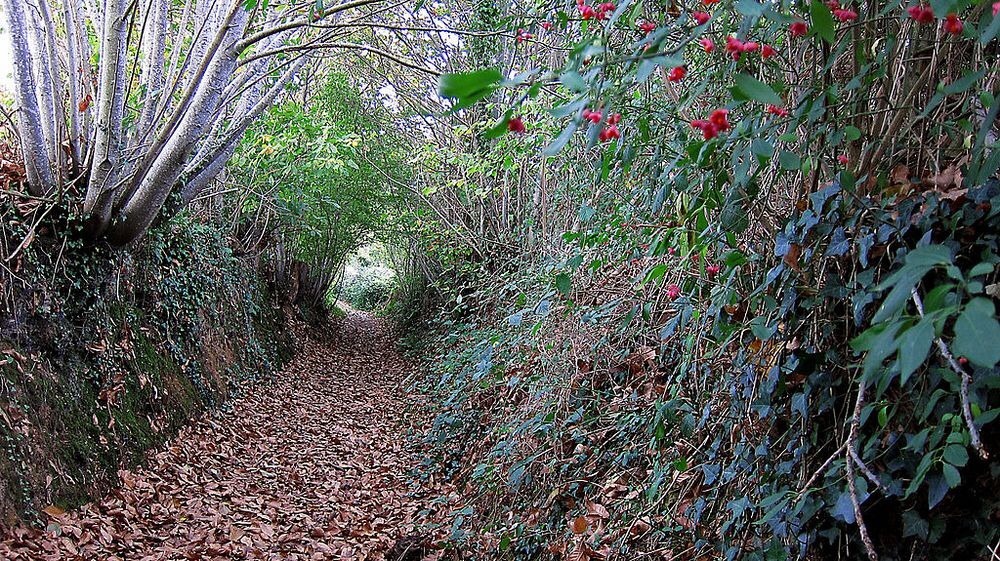Hollow at La Meauffe (La Meauffe, Normandy, France)
Holloways, which appear like deep trenches dragged into the earth, are centuries-old thoroughfares worn down by the traffic of time. In Europe, most of these sunken lanes go back to Roman times, or as early as the Iron Age.
These deep-recessed roads were naturally tunneled into the soft ground by years of footsteps, cart wheels, and animal hooves. Water flowing through the embankments like a gully further molded the paths into rounded ditches that have sunk as much as 20 feet lower than the land on either side. In some cases, trees rise up from the banks flanking the narrow path and reach toward each other to form a canopy over the road, making the holloway look like a tunnel running through the thick greenery.
Holloways are especially common in the bocage, or “hedgerow,” landscape around Normandy, where the countryside is divided into small fields enclosed by sunken lanes and high hedges. Like many sunken roads, the trench-like holloway in La Meauffe was used as a shelter during times of war. During World War II, the La Meauffe hollow was a defensive strongpoint for the German army, providing perfect cover from the advancing American troops. The limited visibility of the terrain caused the Americans to suffer heavy losses during the attack, leading US soldiers to call the road in La Meauffe “Death Valley Road.”
Many who walk through holloways don’t realize they are retracing ancient steps.


